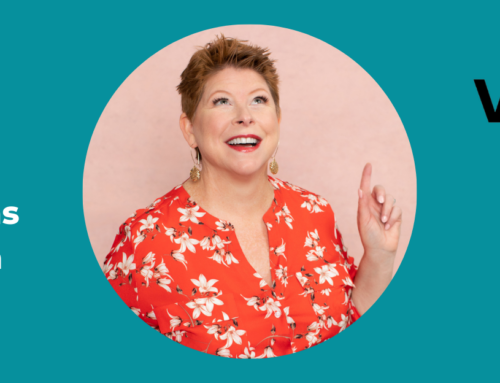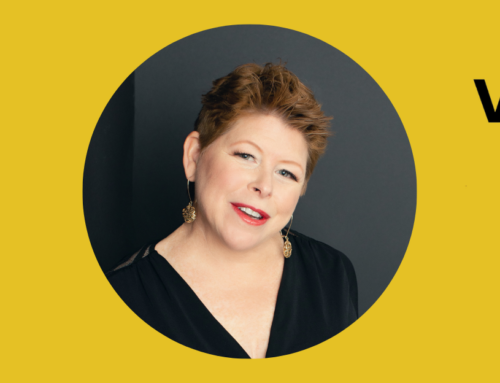
How Cultivating Professional Boundaries for Volunteer Managers Can Help Banish Burnout
Volunteer managers are in the helping profession and sometimes their passion to make the world be a better place can hurt more than help, especially when they don’t take steps to maintain proper professional boundaries. When leaders of volunteers allow their work to transgress professional boundaries, they are subject to burnout.
At Tobi Johnson and Associates, we know that effective volunteer programs are only possible when leaders of volunteers are supported and able to do their best work. So, we need to be able to encourage them to stay balanced and productive.
With so much happening that is out of our control, this is easier said than done.
For mission-driven volunteer managers, we want to ensure that they know how to set professional boundaries that can help them banish burnout.
Read on for how this is possible.
Burnout vs. Stress
Did you know that in 2019 the World Health Organization officially classified burnout as a medical diagnosis?
But what’s the difference between burnout and stress? Don’t they feel and look similar?
Now that burnout is recognized as an official medical diagnosis, it’s time to start taking its effect on professionals and the workplace more seriously.
One of the main differences between burnout and stress is that burnout isn’t quelled by a quick fix. No amount of bubble baths, me-time, or self-care Sundays are going to fully banish burnout. And, left unchecked, burnout can lead to clinical depression.
One way to think about the difference between burnout and stress is to think of stress as too much and burnout as not enough.
Stress looks like…
- too much work
- too many tasks
- too many interruptions
- too many projects, and
- too many meetings
Burnout presents as…
- not enough support
- not enough time
- not enough money
- not enough resources
- not enough staff, and
- not enough volunteers
To take it even further, there are three dimensions of burnout as defined by the Maslach Burnout Inventory:
- Emotional exhaustion: feeling tired and fatigued at work, which can result in absenteeism.
- Depersonalization: feeling disconnected with your work, volunteers, clients, colleagues, etc.
- Reduced personal accomplishment: you are unable to see your success at work, which can lead to a lack of motivation and poor performance.
Think you might be experiencing burnout? First, recognize the signs of burnout, then, take steps to overcome it.
Left untreated, burnout is a risk to you, to your colleagues, your volunteers, your organization, and the clients it serves.
One way you can prevent burnout is to advocate for the needs of your volunteer program. Make sure you are getting the support you need to do your job well, that you have access to training and professional development, and that your role within the organization is clear.
Another way you can reduce the risk of burnout? Boundary setting!
What are Professional Boundaries?

We all know the story of the volunteer manager who wears so many hats that they are constantly balancing along a fine line between work and personal time.
And, regardless of how many limits you put into place, you can’t necessarily control what comes across your desk or what tasks are high priority.
You can set maintain boundaries, though, which will lessen the likelihood of burnout.
Professional boundaries for volunteer managers are clearly established limits that allow for safe connections between staff, volunteers, and clients. In order to set these boundaries, you need to understand where your role as a leader begins.
Consider the type of boundaries you want to set for yourself, then be open and honest about them. Include them in your volunteer policies and procedures, talk to volunteers about how they can set boundaries (especially if they are having personal contact with clients) and how boundaries affect their work.
Tips to Both Set and Maintain Professional Boundaries
Not sure what kind of boundaries you should set? Here are some ideas to get you started:
Gift Giving and Receiving
Don’t give gifts to volunteers (outside of the traditional appreciation gifts), colleagues, and/or clients, and don’t accept them either!
Worried that turning down a gift will hurt someone’s feelings? If a client or volunteer really wants to do something nice for you and brings you a gift basket, tell them you appreciate it and that you are going to share it with everyone at the organization.
I received plenty of food related gifts from volunteers and corporate partners in my day, and I always put them out in the employee breakroom for ALL to enjoy.
Friendships and Dating
It should go without saying, but dating a client or volunteer is bad news. Friendship is a bit more difficult to define, you are in the business of building relationships with people after all and being friendly with them is an important aspect of that.
However, you shouldn’t be hanging out with your volunteers or clients at happy hour or making plans to see them over the weekend.
You need to ensure your volunteers are aware of this same boundary by including it in your volunteer policies.
Social Media
In this day and age, it’s near impossible to get away from social media. That doesn’t mean you need to view social media as a necessary evil. You just need to set boundaries about who gets access to you online, after working hours.
Do you want to accept volunteers or clients as Facebook friends? If your organization already has a policy in place, you must follow it. If not, determine what makes sense for you and write your own volunteer program policy.
Whatever it ends up being, don’t make any exceptions! Your volunteers might see it as favoritism if a volunteer has access to you on a different, more personal level.
Work-Life Balance
This is another boundary that seems to be easily crossed these days, with the prevalence of more people working from home.
However, it’s still important that you set boundaries about what you can and can’t accomplish and communicate that with your boss, colleagues, and volunteers.
If you are starting to feel stretched thin, it’s likely because someone exceeded your boundary for work-life balance.
Don’t allow that to happen! Exceeding boundaries can do more harm than good, but eroding trust and confidence in your ability to do your job well.
Common Questions about Boundary Setting

You might be wondering how you can set boundaries in the workplace; yet still be an asset to your team.
Read on for some common questions and tactics on how you can overcome these personal objections.
Can I still be seen as helpful if I set limits on my workload?
Yes! As Tobi likes to say, boundaries are love.
By setting boundaries, and being clear and open about them, you are communicating to your boss that you respect your own wellbeing and the quality of work you can put out.
However, people in the helping profession (volunteer managers included) are notorious for diving deeper into burnout by pitching in, by taking one for the team, by helping drive their organization’s mission forward no matter what it takes.
So, how can you limit the “additional duties as required” that are thrown your way?
- Communication is key. If people at work (and in your personal life) are treating you in a way that is unacceptable, speak up! They will never know your boundaries if you don’t communicate them.
- Think about and communicate the impact of your decision. Will something more important fall to the back burner if you take on another project? Let your boss or colleagues know that and they will be less likely to trample over your more important tasks.
- Suggest an alternative. While it’s important to say no to things, it’s also important to remain professional and cooperative. One way you can accomplish that is by suggesting an alternative. Does the marketing team want you to write a blog post about the impact volunteers have on the organization? Recommend a volunteer who can take on the task. Bonus- it will have more meaning coming from a volunteer!
- Be direct and firm. Don’t use ambiguous language that can be left to interpretation by your colleagues.
What are legitimate professional boundaries?
There are three types of boundaries you can set at work: physical, mental and emotional.
Physical boundaries are easy to define, while mental and emotional boundaries are more difficult because they aren’t tangible.
Regarding physical boundaries at work, they can include how you prefer to greet someone (with a handshake or hug pre-pandemic) or how you share your workspace and tools.
Do you have a colleague who can’t get their printer to work, and instead of submitting a ticket to IT, they email you document after document, asking if you can print them “really quick”? That’s an example of transgressing a physical boundary.
Do you tend to work through your lunch hour, barely recognizing that you’re feeling hunger pangs? That’s another example your workload transgressing physical boundaries.
Mental and emotional boundaries are about recognizing and respecting your thoughts, values, opinions, and emotions as your own. That they are distinct from everyone else you work with. Examples of these kind boundary violations at work include:
- discouraging divergent opinions during meetings, or being disrespectful to people who have views different from your own
- asking inappropriate questions
- reading personal information (like a job application or employment file)
- having your feelings dismissed because it’s not how others feel
- being asked to justify your feelings and emotions
When you have strong mental and emotional boundaries, and people respect them, you don’t have to be afraid to speak up and share ideas.
How can I manage various forms of communication, so they don’t overburden me?
I get how you feel! You return from a meeting only to find new voicemails, email messages, social media alerts, that ALL need to be answered.
Feeling like you need to be constantly “on” and tuned into what’s happening in the world is a sure-fire way to burnout.
Here are some tips to manage your communications so they don’t run your life:
- Only check email a few times a day. Set aside some time at the beginning of the day, the middle of the day, and the end of the day to check and respond to emails. Let your colleagues know how to reach you in case of an emergency. Don’t be afraid to set up an auto-responder that lets people know when to expect a response, especially if they are used to you responding almost immediately.
- Be stingy with your replies! Just because someone emails you doesn’t mean you are obligated to reply. For example, if you are cc’d, you are likely just being informed of something and no action is required. If you get an unsolicited email from someone who clearly has no idea what you do, don’t feel guilty about simply deleting it!
- If social media is a part of your job, set a timer for 20 minutes (or less) when you check in. I know how easy it is to get sucked into social media and start mindlessly scrolling after work tasks are done. By setting a timer you’ll get a reminder to stop if you fall into the same trap!
How do I handle pushback on my boundaries?
Sometimes, boundaries are met with anger or resistance. Don’t let the fear of resistance stop you from setting them, though!
Use the tips below to learn how to respond to boundary pushers with grace.
Step 1: Identify how you are feeling after boundaries were crossed.
Step 2: Verbalize how you are feeling to the person who transgressed your boundaries.
Step 3: Stand your ground. People who push boundaries will keep doing so if you allow it to happen with no consequences.
Step 4: Don’t feel responsible for the other persons response. You are not the cause of their anger or disappointment!
Further Your Education on Professional Boundaries
Want to learn more about how to set and maintain professional boundaries?
Check out some of these resources:
Where to Draw the Line: How to Set Healthy Boundaries Every Day by Anne Katherine
Burnout: The Secret to Unlocking the Stress Cycle by Emily Nagoski, PhD
Life Kit Podcast from NPR
The Caregiver Cup Podcast (while volunteer managers aren’t caregivers, you are in the helping profession and prone to the same compassion fatigue that caregivers face, which increases your odds of burnout!)
The Science of Happiness Podcast by PRX and UC Berkley’s Greater Good Science Center
Lastly, if after trying everything in this post you are still feeling the symptoms of burnout, please reach out to a mental health professional. Sometimes, we all just need a little extra support.
We wish you all the best in your journey toward a happier and healthier workplace.








Leave A Comment